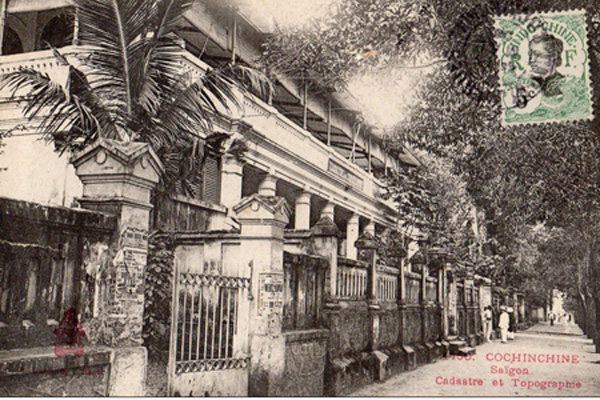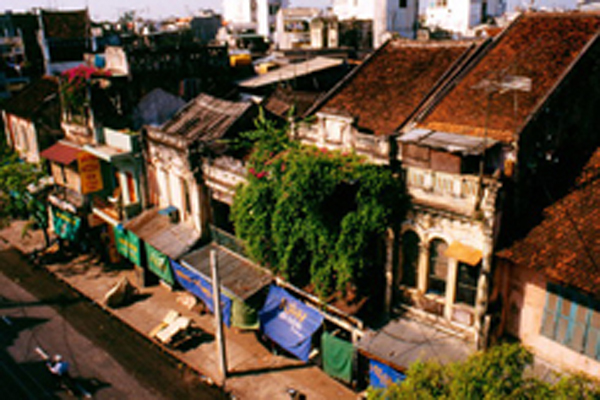The other day I talked to my friend, the historian Phan Huy Le, about a rather topical subject: the old land registers.
Over the past three decades, many historians, Vietnamese and foreign, have looked into the old land registers of rural communes in Vietnam in order to get some light about the past.
Starting from the Le dynasty (15 century), cadastres were subjected to careful regulation. The Nguyen kings (1802-1945) ordered this work to be done meticulously in the two parts of the country which were reunified following two centuries of secession.
Cadastres were written in Chinese characters. For official acts classical Chinese was used, as Latin was in Europe in the Middle Ages. Concrete details were recorded: village boundaries, administrative regime, plans of communal and private lands, characteristic features of each plot, and names of owners… Thanks to this rich content, the cadastre is a valuable document for the study of the Vietnamese countryside in several aspects: the state of the clearing and exploitation of lands, the complex agrarian regime, the distribution of land and social differentiation, ancestry lines, demography, indirect contributions to certain cultural aspects, e.g. the nom demotic characters, the organization of communal life, popular beliefs…

The huge treasure of cadastres, whose exploitation has barely started, is kept at the Institute of Han-Nom Studies and at the Department of State Archives. The first collection, made by the Ecole fran9aise d’ Extreme Orient in colonial times, comprises 1635 cadastres of 94 districts of northern provinces The second collection, made by the Court of Hue, holds 16,884 cadastres.
Phan Huy Le talks with enthusiasm about the old cadastres of Hanoi kept at the Department of State Archives. Let us recall that after transferring the capital from Hoa Lu in the hills to Thang Long (Hanoi) in the delta in the year 1010, the Ly dynasty set up there the prefecture of Ung Thien as administrative seat. In the reign of the Le (15th century) Ung Thien became Phung Thien, the forerunner in present-day Hanoi of what we now call the old quarter. In 1831, in the reign of the Nguyen, the name Hanoi appeared for the first time in our geographical documents. It then designated the new province created by King Minh Menh. It came from the fact that the province is situated on this side of a bend in the Red River (Ha: river; Noi: on this side). The old Thang Long with two districts served as administrative seat of the province of Hanoi In the early days of French domination, it was dubbed “city of Hanoi” while the “province of Hanoi” took the name of “Ha Dong province”.
Phan Huy Le has studied the cadastres of Tho Xuong, one of the two districts which correspond to the present-day capital, these cadastres being kept at the Department of State Archives. In the nomenclature of the administrative units under Gia Long (1802- 1819) there were already the names of thon (old hamlet) selling or making traditional goods: swords (Hang Kiem), combs (Hang Luoc), tea (Hang Che), fishing products (Hang Chai), fish (Hang Ca), soup (Hang Chao)… Under Minh Menh (1821), these names in the vernacular were changed into Sino-Vietnamese words: Hang Chai became Ngu Vong, Hang Ca became Gia Ngu, etc.
In Thang Long, alongside thon and phuong (guild) grouping craftsmen and traders, there existed agricultural units whose populations were engaged in both handicraft and trading as ancillary occupations. The town was organically linked to the countryside, which explains the semi-rural character of Hanoi and other Vietnamese cities at present.
Thang Long is a city of streams and lakes which play an important role in daily life and economic development. They constitute fish reserves, a natural drainage system in case of flood, a system of ecological regulation. It is to be regretted that, over recent years, the city planners have not taken this factor sufficiently into account. The attendant imbalance has become all the more serious since in the wake of the market economy the people living on the city outskirts have vied with one another in filling up lakes and ponds for the construction of hotels and other facilities for incoming foreigners.



